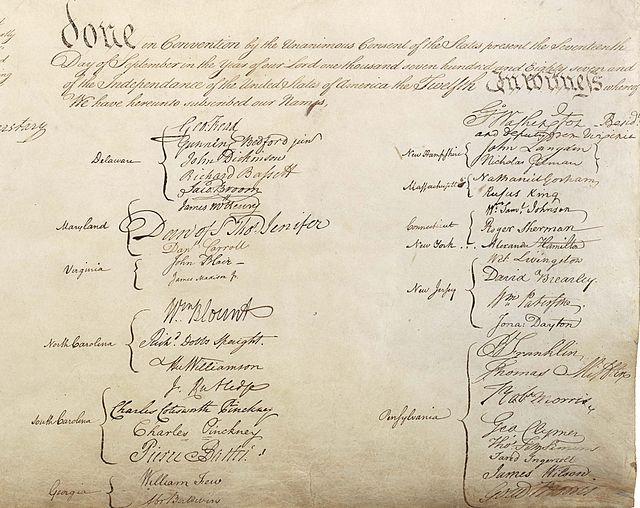Article Three of the United States Constitution
Article Three of the United States Constitution establishes the judicial branch of the U.S. federal government. Under Article Three, the judicial branch consists of the Supreme Court of the United States, as well as lower courts created by Congress. Article Three empowers the courts to handle cases or controversies arising under federal law, as well as other enumerated areas. Article Three also defines treason.
Secretary of State James Madison, who won Marbury v. Madison, but lost judicial review
A nineteenth-century painting of a jury
Iva Toguri (pictured), known as Tokyo Rose, and Tomoya Kawakita were two Japanese Americans who were tried for treason after World War II.
Constitution of the United States
The Constitution of the United States is the supreme law of the United States. It superseded the Articles of Confederation, the nation's first constitution, on March 4, 1789. Originally including seven articles, the Constitution delineates the national frame and constrains the powers of the federal government. The Constitution's first three articles embody the doctrine of the separation of powers, in which the federal government is divided into three branches: the legislative, consisting of the bicameral Congress ; the executive, consisting of the president and subordinate officers ; and the judicial, consisting of the Supreme Court and other federal courts. Article IV, Article V, and Article VI embody concepts of federalism, describing the rights and responsibilities of state governments, the states in relationship to the federal government, and the shared process of constitutional amendment. Article VII establishes the procedure subsequently used by the 13 states to ratify it. The Constitution of the United States is the oldest and longest-standing written and codified national constitution in force in the world.

Page one of Jacob Shallus' officially engrossed copy of the Constitution signed in Philadelphia by delegates of the Constitutional Convention in 1787
Scene at the Signing of the Constitution of the United States on September 17, 1787, a 1940 portrait by Howard Chandler Christy depicting the signing of the Constitution in Philadelphia
"We the People" in its original edition
The signatures in the closing endorsement section of the United States Constitution







